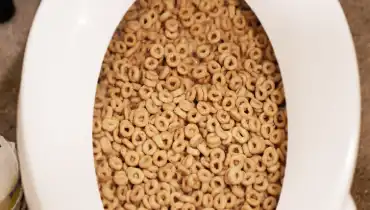Is it Practical to Dispose of Food Down the Toilet?
Is it Practical to Dispose of Food Down the Toilet?
Blog Article
The publisher is making several good pointers regarding Is it safe to flush food (especially rice) down the toilet? overall in this post in the next paragraphs.

Introduction
Many people are often confronted with the issue of what to do with food waste, particularly when it involves leftovers or scraps. One common inquiry that develops is whether it's alright to flush food down the commode. In this write-up, we'll explore the reasons individuals could take into consideration purging food, the effects of doing so, and different methods for appropriate disposal.
Reasons that people may take into consideration purging food
Lack of recognition
Some people might not recognize the potential damage triggered by flushing food down the commode. They may mistakenly think that it's a harmless technique.
Comfort
Flushing food down the bathroom might feel like a quick and very easy remedy to dealing with undesirable scraps, particularly when there's no nearby trash bin offered.
Laziness
In some cases, people might just pick to flush food out of large negligence, without considering the repercussions of their actions.
Consequences of flushing food down the toilet
Environmental effect
Food waste that winds up in rivers can contribute to air pollution and harm marine environments. Additionally, the water made use of to purge food can strain water sources.
Pipes concerns
Purging food can result in blocked pipelines and drains pipes, triggering expensive plumbing repair services and troubles.
Kinds of food that ought to not be purged
Fibrous foods
Foods with fibrous structures such as celery or corn husks can obtain entangled in pipes and create blockages.
Starchy foods
Starchy foods like pasta and rice can soak up water and swell, causing clogs in pipes.
Oils and fats
Greasy foods like bacon or cooking oils should never be purged down the commode as they can strengthen and cause blockages.
Appropriate disposal approaches for food waste
Using a garbage disposal
For homes geared up with garbage disposals, food scraps can be ground up and purged through the pipes system. Nonetheless, not all foods are suitable for disposal in this manner.
Recycling
Specific food packaging products can be recycled, lowering waste and minimizing environmental effect.
Composting
Composting is an eco-friendly method to take care of food waste. Organic materials can be composted and used to enhance dirt for gardening.
The relevance of proper waste administration
Decreasing environmental damage
Appropriate waste administration techniques, such as composting and recycling, aid decrease pollution and preserve natural resources for future generations.
Shielding pipes systems
By preventing the method of flushing food down the bathroom, home owners can stop expensive pipes repairs and preserve the stability of their plumbing systems.
Verdict
In conclusion, while it may be alluring to purge food down the bathroom for convenience, it is essential to understand the prospective repercussions of this activity. By adopting proper waste monitoring techniques and dealing with food waste properly, individuals can contribute to healthier plumbing systems and a cleaner environment for all.
FLUSH FOOD DOWN THE TOILET?
FLUSHING FOOD CAN CAUSE BLOCKED DRAINS IN YOUR HOME
All of the plumbing fixtures in your home are connected to the same sewer pipe outside of your home. This outdoor sewer pipe is responsible for transporting all the wastewater from your home to the Council sewer mains. Even small pieces of food that go down the kitchen sink can cause problems for your sewer. It should therefore be obvious that flushing larger bits of food, such as meat, risks a clog in either the toilet itself or the sewer pipes. Flushing greasy food is even more problematic because oil coagulates when it cools, coating the interior lining of your pipes.
THE TOILET IS NOT A BIN
Food isn’t the only thing that people shouldn’t be flushing down the toilet. People use the toilet to dispose of all kinds of things such as tampons, makeup wipes, dental floss, kitty litter and even underwear. Water goes to great lengths to educate residents about the high costs and stress placed on wastewater treatment systems simply from people flushing the wrong stuff down the toilet. It costs taxpayers millions of dollars each year, and homeowners thousands in blocked drain repairs.
FLUSHING FOOD IS A WASTE OF WATER
Flushing food is a waste of our most precious resource - water. In June this year Level 1 water restrictions were introduced to protect water supply from drought conditions. Much of New South Wales continues to be affected by prolonged drought with recent figures revealing up to 97 per cent of the state remains in drought. Depending on whether you have a single or dual flush toilet, every single flush uses between five and 11 litres of water. In the current climate this is a huge amount of water to be wasting on flushing food that should be placed in the bin (or better yet, the compost).
https://www.jabplumbingsolutions.com.au/blog/can-you-flush-food-down-the-toilet

Do you like reading about Flushing Food Down the Toilet?? Write a comment down below. We would be delighted to know your opinion about this page. We hope that you visit us again in the near future. If you enjoyed reading our post kindly be sure to pass it around. Many thanks for being here. Revisit us soon.
Book Today! Report this page